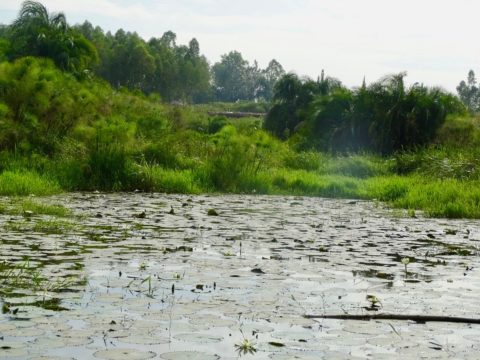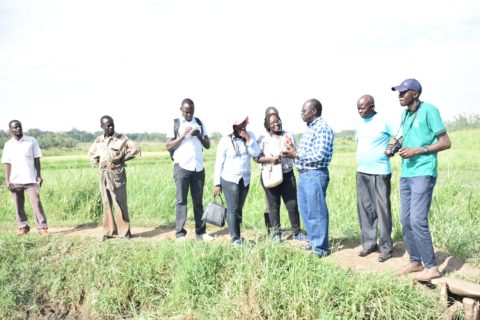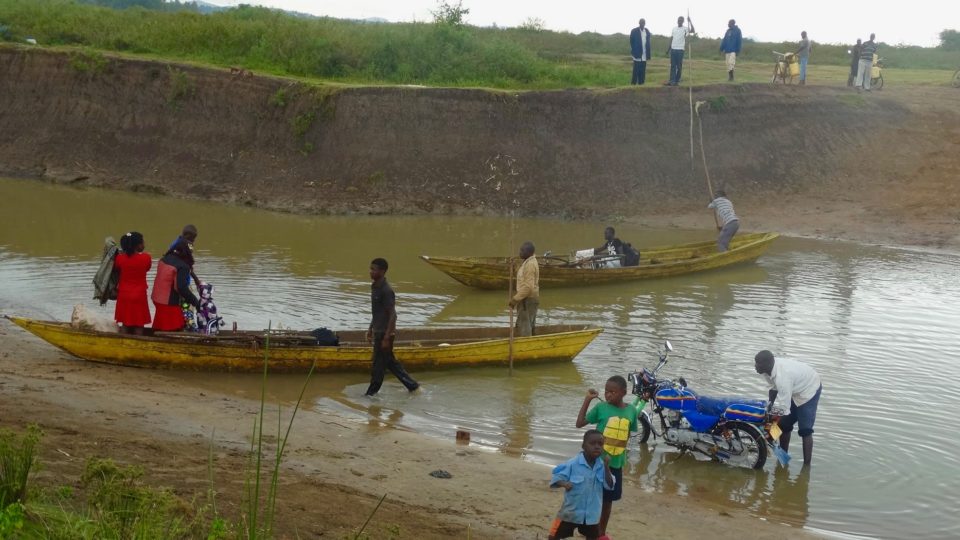Despite covering only 0.6% of Earth’s surface, wetlands provide very critical ecosystem services but are threatened with degradation by human activities as most people are ignorant of their crucial ecological function and consider them undesirable. To address these issues “Wetlands without borders” a project executed by Wetlands International, is focusing on the development of Monographs, Wetlands Management Plans and Conservation Investment Plans for three (3) transboundary wetlands: Sio -Siteko, Sango Bay Minziro and Semliki Delta shared between Kenya, Uganda, Tanzania and the Democratic Republic of the Congo. The project is funded by the German agency for technical cooperation (GIZ) through the Nile basin initiative.
Developing and implementing site-specific wetland management plans is a key step towards achieving the sustainability of a wetland and a requirement of the Ramsar Convention (1971). The overall goal of wetland management planning is to achieve optimal utilization of the wetland resources while providing continued benefits to the immediate and distant communities both now and in the future.

Sio-Siteko wetland in Busia County Kenya
Scoping Missions for the 3 transboundary wetlands undertaken;
Sio Siteko wetlands extends to Kenya –Uganda border providing a number of valuable ecosystem goods and services. Being a transboundary resource, lack of harmony among the two countries has been a drawback to the conservation and management of the wetland. This is because environment management policy and legislative frameworks in Uganda and Kenya are not exactly the same. Transboundary Wetland Community Based Management Plan was initially developed in 2008/2009 by technical teams involving national, local authorities and key stakeholders Kenya and Uganda, that aimed at sustaining local and cross-border ecological, cultural and socio-economic well-being. Due to the transboundary nature of the plan, the Nile Basin Initiative (NBI) and Lake Victoria Basin Commission (LVBC) facilitated the processes. Implementation through local institutions, stakeholders and beneficiaries was never carried out, and with increasing population degradation has continued unabated. Encroachment on the wetlands, deforestation, sand harvesting, invasive species, conversion of wetlands for agricultural activities, and waste discharge into the water bodies continue to imperil the local population, their livelihoods and key public infrastructure. Together with our partners (Prof. Raburu and Nature Uganda) we conducted a scoping mission to Busia County (Kenya) and Busia District (Uganda) from 14th to 16th January 2019. Due to the increasing threats to ecosystem services, livelihoods and economic infrastructure, government officials from both Uganda and Kenya appointed focal technical officers to assist the mission and ensure that the outcomes were incorporated in both local and community development programs.
Sango Bay Minziro wetlands, between Uganda and Tanzania, lie on the intersection between Kagera River’s catchment and Lake Victoria, with a very rich and diverse ecosystem with many wildlife such as elephants, snakes, buffalos, Antelope, Baboons and many others. It is also the unique and global breeding ground for over 45 bird species. Minziro Forest Reserve is being upgraded to a full National park, while Sango bay is an officially designated RAMSAR site. The region also a melting pot- more than 20% of the resident population have crossed over from the neighbouring country, building on a vibrant black economy with trade in livestock, fish, cereals and household goods prevalent across the border. A scoping mission comprising of NELSAP, GIZ, Wetlands International and implementing partners visited the wetlands region between 9-12 January 2019. Part of the finding is the difficulty in implementing decisions of common interest as officials have to refer to their respective national headquarters to be able to move forward, increasing transaction costs through bureaucracy despite the vaunted regional integration. Population growth from both nationals and immigrants is creating pressure on land for agriculture, cattle keeping, commercial firewood, charcoal, forest deforestation for traditional medicines.
Semliki, in the Albertine rift, is one of the ecologically sensitive areas in the country. It has two protected areas within the river system; the Toro-Semliki Wildlife Reserve and the Semliki National Park. The watershed receives high rainfall of 1245 mm per annum, but climate change has led to increased precipitation of the Rwenzoris, leading to increased flooding and shifting of the river from its historic course. Due to population growth on the Ugandan side, vegetation is rapidly depleted yet the local people cannot cross over with the cattle due to insecurity on the Congolese side. Fish levels have collapsed in sections of the river and wetlands, and the NELSAP project is supporting the Lake Edward and Albert Fisheries Program (LEAF) to strengthen sustainable fisheries management while increasing economic value chains. Together with our partners, Nature Uganda and NELSAP/LEAF officers, we carried out a scoping mission to review the climate, environmental challenges as well as threats to livelihoods and ecosystems. Despite inadequate data to verify issues raised by different stakeholders, a plan of action geared to a “no-regrets” set of interventions was proposed to improve governance, regulate community harvesting of nature-based resources; demarcate clearly boundaries and buffer areas to enhance conservation and improve coordination between local institutions and stakeholders on both sides of the border.
Over the coming months the project will focus on:
- Providing capacity building and awareness raising in wetland management rights and responsibilities as part of the participatory process; and
- Assisting the communities in developing by-laws for implementing the plan and possibly demarcation of management zones

Scoping mission by the wetlands without borders team

